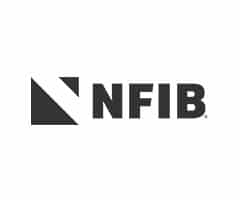Employers must protect individuals identifying as LGBTQ+ from workplace discrimination. Awareness of issues affecting LGBTQ+ individuals is also important, including sensitivity to the needs of transgender individuals who may be transitioning or undergoing sexual reassignment surgery.
Take Complaints Seriously
Create an atmosphere of open communication and trust so that employees can voice their concerns without fear of retaliation.
Firmly commit to taking all complaints based on LGBTQ+ status seriously, and promptly investigate them. Assure employees, managers and supervisors that they will not be retaliated against for bringing a complaint and that the complaint will be kept confidential to the extent possible.
Conduct a thorough investigation by reviewing any evidence and interviewing the complainant, the alleged perpetrator and any potential witnesses. Document the entire investigation process and the steps taken in response to the complaint. Consider implementing interim measures such as separating the complainant from the alleged perpetrator during the course of the investigation. Take remedial and/or disciplinary measures, if warranted. Then follow up with the employee to ensure that no further incidents have occurred.
Provide Reasonable Accommodations
Carefully consider all accommodation requests from LGBTQ+ individuals. Discuss the request with the employee, and provide reasonable accommodations when possible. For example, consider allowing all employees and third parties to use the restroom or locker room that corresponds with their current gender identity and presentation regardless of the individual’s sex at birth. Single-occupant, gender-neutral restrooms provide increased privacy for all individuals. If an employer maintains multi-occupant restrooms with stalls, it may want to consider additional privacy measures such as stall doors and dividers. An employee who is uncomfortable with an LGBTQ+ individual using a particular restroom should be permitted to use another facility.
When it comes to accommodation requests relating to dress codes, allow an individual to dress consistently with their gender identity, as long as the individual looks professional and appropriate for the particular workplace and position. This also applies to policies related to uniforms, grooming, jewelry and makeup.
Handle a transgender employee’s name change using the same policies and procedures for other employee name changes (e.g., after marriage or divorce). Also find out their preferred pronouns and then use them. Make sure all managers, supervisors and colleagues do the same.
Support Transitioning Employees
While the Supreme Court recognized that its decision does not provide employers with guidance on issues surrounding sex-specific changing facilities and restrooms, employers can still strive to be sensitive to transgender employees who are transitioning and/or undergoing gender reassignment surgery.
Processes around how an employee can make a name change, update employee records, resolve conflicts over restroom use, comply with the dress code, or request a change in duties or responsibilities, a potential transfer and other accommodations that an employee may need while they are transitioning should be discussed and handled on a case-by-case basis.
Keep all discussions private and confidential, to the extent possible, but also work through with the employee how and when they want co-workers and third parties to be advised of the change.
Also, be aware of any state or local laws that may impact the employer’s decision. For example, in New York City, employers may not require an individual to use a single-occupancy restroom or other facility. However, employers can accommodate requests to use single-occupancy restrooms and can provide single-occupancy restrooms and private space within multi-user facilities for anyone who has privacy concerns.
Review Recruiting and Hiring Practices
LGBTQ+ individuals should be treated fairly in all aspects of employment including recruiting and hiring.
Recruitment practices should aim to attract applicants from as wide a talent pool as possible. Inclusive recruitment practices include:
- Stating the employer’s adherence to anti-discrimination laws in job postings. An employer could even consider listing the specific grounds on which it will not discriminate;
- Recruiting from broad-reaching sources (e.g., post job ads on general job boards) and targeting under-represented groups (e.g., provide job ads to LGBTQ+ advocacy groups to post on their website); and
- If using an employment agency or external recruiter, clearly explaining the employer’s stance on discrimination.
Hiring decisions should be based on merit, skills and qualifications. Ensure interviewers do not talk about personal matters, especially ones that could lead an applicant to reveal their sexual orientation or gender identity or other protected characteristic (e.g., asking about family status, assuming a male candidate’s spouse is a woman).
Any background checks or reference checks that require applicants to provide a prior name could expose a transgender applicant. Such information should be kept confidential and not shared with the hiring decision-makers.










